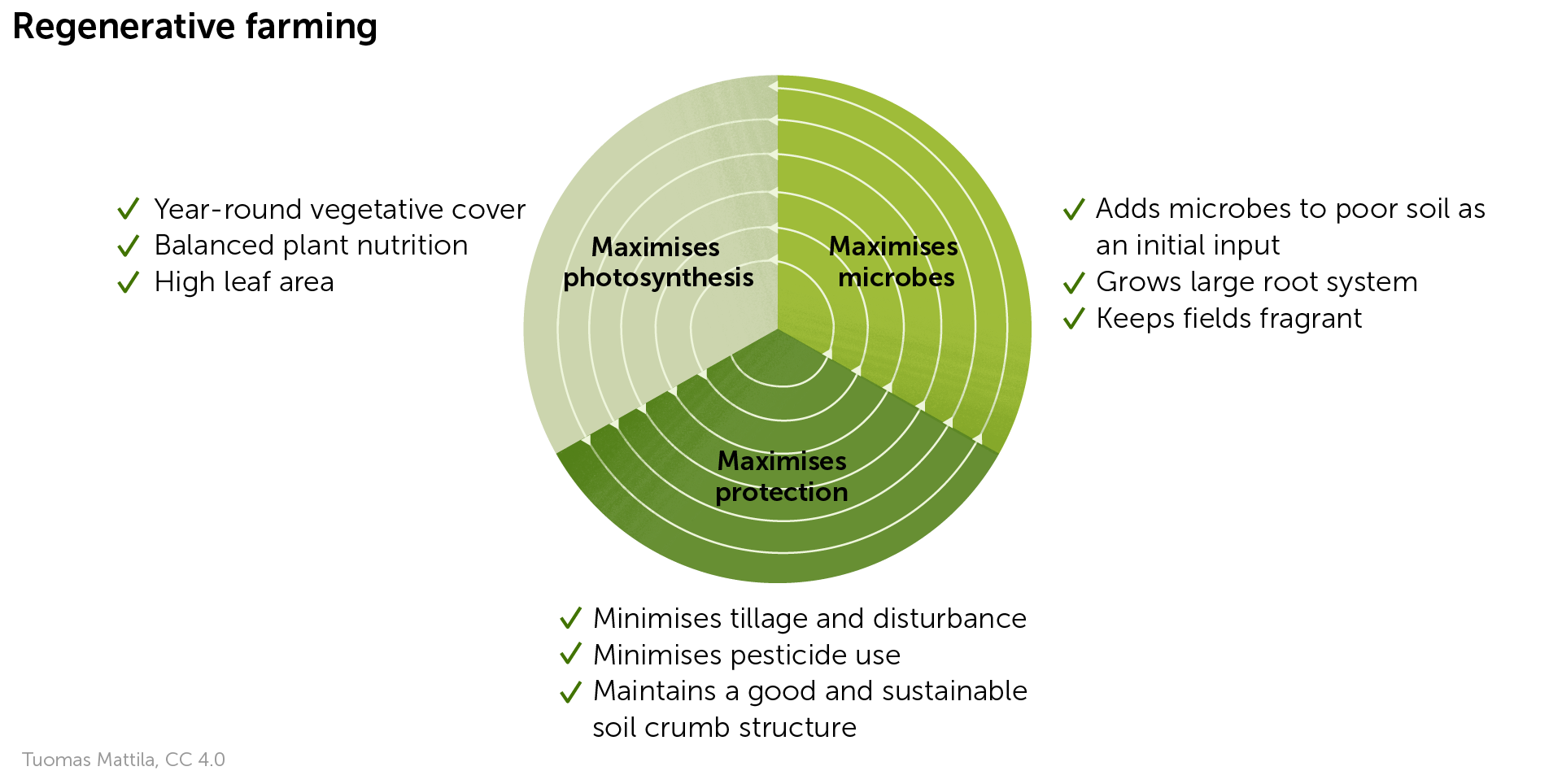You must log in or register to do the quizzes, complete the course and receive a certificate.
2.2. The three principles of regenerative farming
What does this new mindset mean in practice? Let’s now take a worm’s-eye view and delve deeper into regenerative farming at field level.
What kind of soil is good soil?
You don’t need to be a farmer to understand the importance of healthy soil. Anyone who has tended chrysanthemums or carrots in their garden or allotment knows that plants need porous and suitably moist soil with plenty of nutrients. The recipe for a productive field is similar. It is vital to have a diverse range of healthy soil organisms.
The soil in a handful of healthy arable land contains more organisms than there are people on the planet. Visible inhabitants (such as worms and spiders) and microscopic organisms (aka microbes) are a farmer’s most important workforce. Soil organisms need food, water, oxygen, shelter and adequate living space. More of them are found insoil that is rich in humus — that is, soil that contains plenty of organic matter.
Organic matter means plant and animal residues, and dead microorganisms. According to a new theory, much of the long-lasting carbon compounds in the soil are in fact residues of microbial biomass. Living soil organisms move, modify and degrade organic matter. This improves the structure of the soil, its nutrient retention and its ability to drain and retain an appropriate amount of water. Organic matter in soil is therefore the lifeblood of soil organisms and a prerequisite for healthy soil.

Organic matter has a positive impact on soil health in many ways, and therefore facilitates farming as well.
How do you care for the soil?
Farmers need to ensure the wellbeing of the organisms living in their fields. Regenerative farming gives you the tools you need to succeed in this responsible role. The action required to promote healthy soil can be encapsulated in three principles.
The principles of regenerative farming
Maximise photosynthesis. When plants photosynthesise, some of the carbon is used by soil microbes, while the rest is stored in the soil. A large part of fields is mineral soil, the health of which improves when the soil binds more carbon.
Maximise microbes. A diverse range of organic matter in fields increases both the number and biodiversity of soil organisms. The activity of soil organisms improves the soil’s growing characteristics.
Maximise protection. In order to be healthy, soil organisms need protection from things such as temperature fluctuations and drying out. A good soil structure and minimal – that is, only strictly necessary – tillage provides these organisms with the protection they need.

In regenerative farming, practical fieldwork can be very varied depending on factors such as soil type. However, everything revolves around and promotes these three principles. The principles are not distinct – they are mutually beneficial.
Next, we will look at how the principles of regenerative farming are put into practice. But first, let’s recap the key concepts of good soil health.